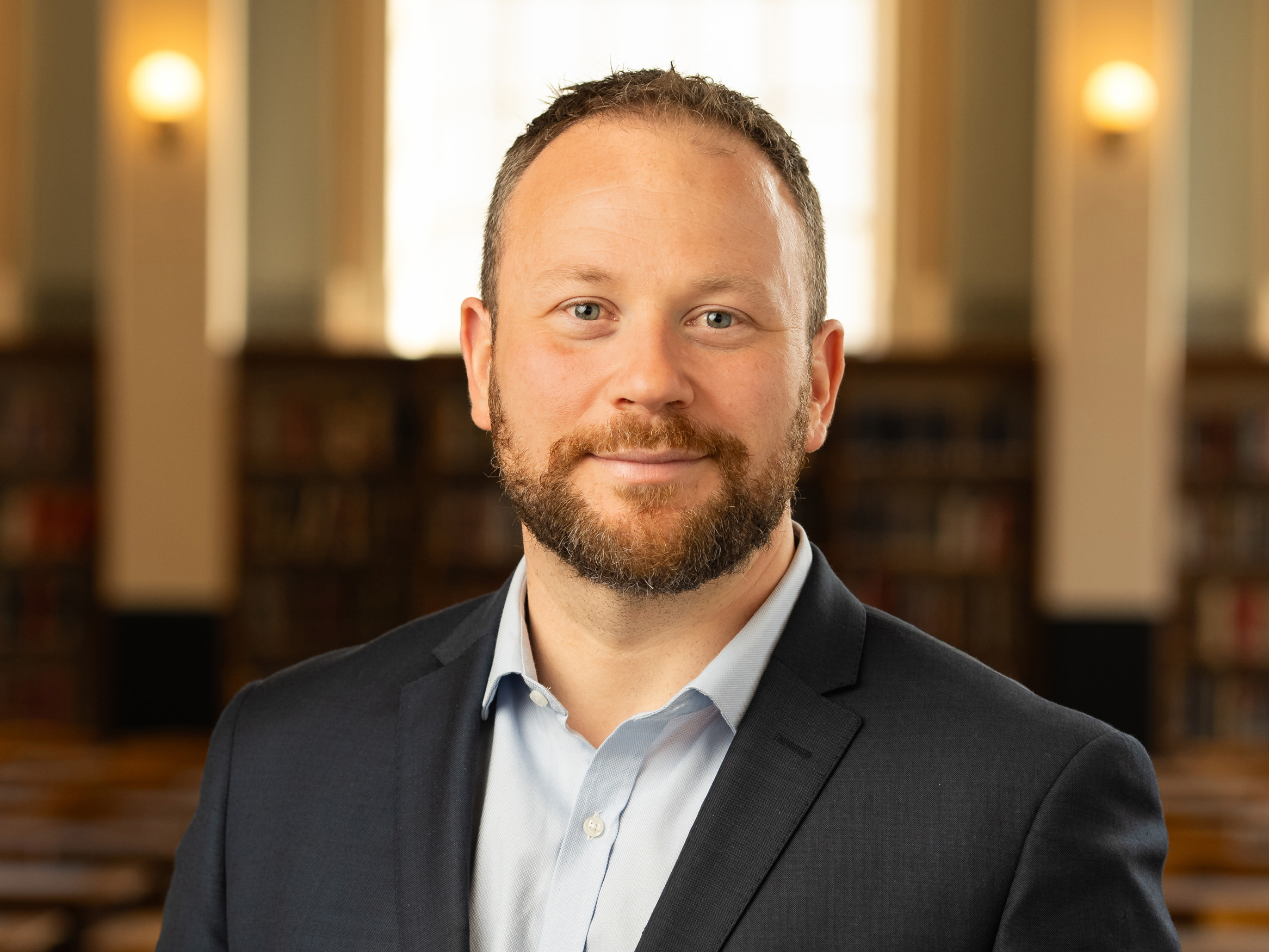
Name: Vince Condina
Title: Chief Information Officer
Company: The University of Adelaide
Commenced role: 2023
Reporting line: Chief Operating Officer
Member of the executive team: Yes
Technology Function: 240 staff and contractors in IT, with 6 direct reports
The University of Adelaide (UoA) is one of the leading Australian universities, third oldest in the country and one of the prestigious Group of 8 Australian Research-intensive universities.
UoA is a diverse community with more than 23,000 students and approximately 3,800 staff – all with different goals, needs and expectations, resulting in varied technology requirements.
Information technology (IT) within universities supports core functions such as learning, teaching, and research. In the past, the IT branch often acted as a gatekeeper, governing access to technology and, at times, was perceived as being somewhat reluctant when it came to new initiatives or tools.
UoA Chief Information Officer Vince Condina said this presents challenges when working with people at the university because they felt IT did not fully understand their needs or priorities.
Unprecedented transformation
Currently the University of Adelaide is navigating an unprecedented transformation as it merges with the University of South Australia (UniSA) to form one of the largest universities in Australia. The merger is the largest ever Australian university merger and among the largest ever worldwide.
“There has never before been a merger of this scale in Australia – and there is a colossal program underway of which IT is but one part,” Condina said.
“Some of the new university systems needed to be operational by July 2024, so IT is at the forefront of much of the work that will be critical to the success of the new university.”
For the University of Adelaide, the stakes are high. It is a testament to how highly regarded Condina is by university leadership, that they rely on his guidance and counsel. Being a trusted technology advisor when the stakes are high is real influence.
The new Adelaide University (AU) – launching January 2026 – will be one of the largest Australian universities, the first new major Australian university in a generation and aims to be one of the highest ranked.
The challenge for Condina and his team, is in meeting the operational needs and ensuring business continuity for UoA, while simultaneously supporting the building of the contemporary technology required for AU in the short timeframe before launch – given technology often has long lead-times in getting up and running.
Condina said it’s like having to fly the plane while building it at the same time.
“UoA services cannot be compromised and must remain secure and operational as it pivots to AU,” Condina said.
“We are still running some major initiatives in parallel to the merger, such as Network Modernisation, our Cyber program with a focus on shadow IT and data security (PII) as well as doing an AI pilot.”
“All IT related decisions are made with UoA and the new AU in mind, so that the investment can benefit the University of Adelaide but also in time by the new institution.”
“We are combining game-changing technology with progressive IT changes to uplift UoA and set up robust, contemporary technology foundations so Adelaide University is world class from the start.”
“Many of these changes are often considered to be in the too hard basket but unless UoA addresses them now, they will become entrenched in AU and near impossible to change – significantly impacting technology security, effectiveness and efficiency.”
The Network Modernisation program at UoA is one such game changer – and is bringing state of the art network and security capabilities to UoA. This new network capability will subsequently be leveraged by the new Adelaide University.
Engaging and influencing the wider university
From the outset, Condina’s approach to working with IT’s customers across the university was based on building and maintaining strong relationships and mutual understanding. He engaged strongly with all areas, making sure his leadership team did the same and put in place innovative measures to achieve this goal.
“Being skilled in IT is just the beginning”, Condina said.
“The IT branch must stay up to date on current technology and trends, understanding what can be applied and how to maximise the existing technology infrastructure.”
Condina actively recruited non-IT staff who had University experience because he could teach them about IT, but it was much harder to teach how Universities function to an IT expert.
Additionally, engaging with existing University IT staff, creating opportunities for development and cross-skilling, was part of a campaign that Condina initiated to set a new culture within the IT team.
As well as playing lead roles in engaging with the University these key staff help ensure communications from IT are created in ways that would resonate with the university and be clearly understood.
Fostering trust
Building trust and respect within the University has taken years. However, through Condina’s dedicated engagement and groundwork leading up to his appointment as CIO in 2023, a strong mutual respect now exists between him and the University leadership, who regard him as their strategic technology advisor.
Influence, like respect, is earned, not given by title. Condina has garnered the trust of University leadership through his University-centric approach, consistently achieving meaningful outcomes for the wider University community.
“I strongly encourage the extended IT leadership team to actively engage with all areas of the University, forging their own relationships with both leadership and operational teams and developing a deep understanding of those areas,” Condina said.
“This broadens our connections, ensuring insights flow between IT and the University, ultimately positioning IT as a key partner that enables and supports the University’s goals at every level.”
“We have some challenging times ahead but I am confident that we have the right IT team, relationships, stakeholder and leadership support, and approach needed to get the job done.”
Title: Chief Information Officer
Company: The University of Adelaide
Commenced role: 2023
Reporting line: Chief Operating Officer
Member of the executive team: Yes
Technology Function: 240 staff and contractors in IT, with 6 direct reports
The University of Adelaide (UoA) is one of the leading Australian universities, third oldest in the country and one of the prestigious Group of 8 Australian Research-intensive universities.
UoA is a diverse community with more than 23,000 students and approximately 3,800 staff – all with different goals, needs and expectations, resulting in varied technology requirements.
Information technology (IT) within universities supports core functions such as learning, teaching, and research. In the past, the IT branch often acted as a gatekeeper, governing access to technology and, at times, was perceived as being somewhat reluctant when it came to new initiatives or tools.
UoA Chief Information Officer Vince Condina said this presents challenges when working with people at the university because they felt IT did not fully understand their needs or priorities.
Unprecedented transformation
Currently the University of Adelaide is navigating an unprecedented transformation as it merges with the University of South Australia (UniSA) to form one of the largest universities in Australia. The merger is the largest ever Australian university merger and among the largest ever worldwide.
“There has never before been a merger of this scale in Australia – and there is a colossal program underway of which IT is but one part,” Condina said.
“Some of the new university systems needed to be operational by July 2024, so IT is at the forefront of much of the work that will be critical to the success of the new university.”
For the University of Adelaide, the stakes are high. It is a testament to how highly regarded Condina is by university leadership, that they rely on his guidance and counsel. Being a trusted technology advisor when the stakes are high is real influence.
The new Adelaide University (AU) – launching January 2026 – will be one of the largest Australian universities, the first new major Australian university in a generation and aims to be one of the highest ranked.
The challenge for Condina and his team, is in meeting the operational needs and ensuring business continuity for UoA, while simultaneously supporting the building of the contemporary technology required for AU in the short timeframe before launch – given technology often has long lead-times in getting up and running.
Condina said it’s like having to fly the plane while building it at the same time.
“UoA services cannot be compromised and must remain secure and operational as it pivots to AU,” Condina said.
“We are still running some major initiatives in parallel to the merger, such as Network Modernisation, our Cyber program with a focus on shadow IT and data security (PII) as well as doing an AI pilot.”
“All IT related decisions are made with UoA and the new AU in mind, so that the investment can benefit the University of Adelaide but also in time by the new institution.”
“We are combining game-changing technology with progressive IT changes to uplift UoA and set up robust, contemporary technology foundations so Adelaide University is world class from the start.”
“Many of these changes are often considered to be in the too hard basket but unless UoA addresses them now, they will become entrenched in AU and near impossible to change – significantly impacting technology security, effectiveness and efficiency.”
The Network Modernisation program at UoA is one such game changer – and is bringing state of the art network and security capabilities to UoA. This new network capability will subsequently be leveraged by the new Adelaide University.
Engaging and influencing the wider university
From the outset, Condina’s approach to working with IT’s customers across the university was based on building and maintaining strong relationships and mutual understanding. He engaged strongly with all areas, making sure his leadership team did the same and put in place innovative measures to achieve this goal.
“Being skilled in IT is just the beginning”, Condina said.
“The IT branch must stay up to date on current technology and trends, understanding what can be applied and how to maximise the existing technology infrastructure.”
Condina actively recruited non-IT staff who had University experience because he could teach them about IT, but it was much harder to teach how Universities function to an IT expert.
Additionally, engaging with existing University IT staff, creating opportunities for development and cross-skilling, was part of a campaign that Condina initiated to set a new culture within the IT team.
As well as playing lead roles in engaging with the University these key staff help ensure communications from IT are created in ways that would resonate with the university and be clearly understood.
Fostering trust
Building trust and respect within the University has taken years. However, through Condina’s dedicated engagement and groundwork leading up to his appointment as CIO in 2023, a strong mutual respect now exists between him and the University leadership, who regard him as their strategic technology advisor.
Influence, like respect, is earned, not given by title. Condina has garnered the trust of University leadership through his University-centric approach, consistently achieving meaningful outcomes for the wider University community.
“I strongly encourage the extended IT leadership team to actively engage with all areas of the University, forging their own relationships with both leadership and operational teams and developing a deep understanding of those areas,” Condina said.
“This broadens our connections, ensuring insights flow between IT and the University, ultimately positioning IT as a key partner that enables and supports the University’s goals at every level.”
“We have some challenging times ahead but I am confident that we have the right IT team, relationships, stakeholder and leadership support, and approach needed to get the job done.”








